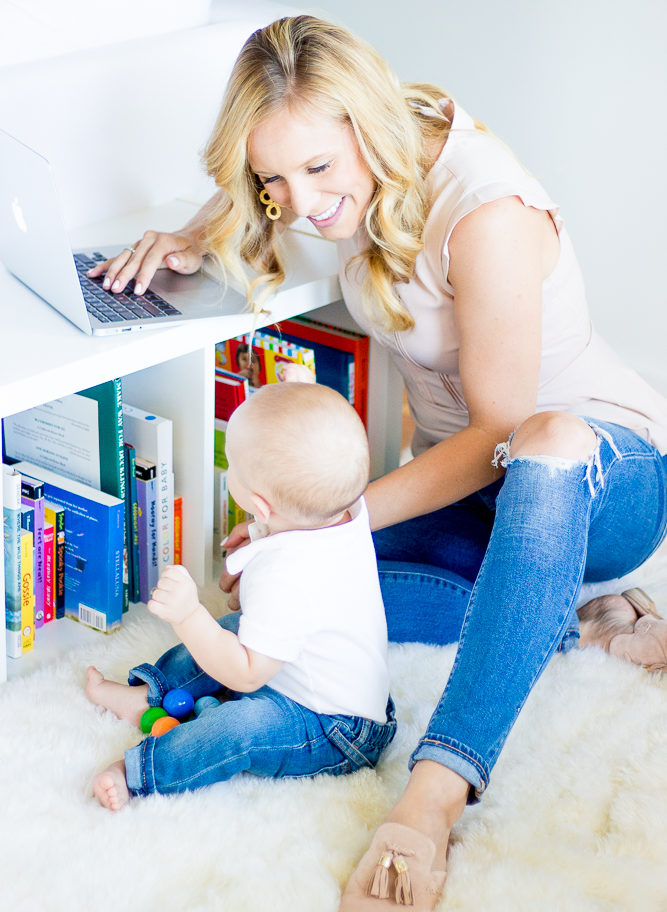
top- sold out, similar | jeans | earrings | rug | crib | mattress | mattress pad | stuffed animals: Bear, Bunny, Lamb | curtains | hamper | dresser
Baby sign language is something I had wanted to do with my baby since I was pregnant. It helps babies communicate better and cut down on their frustration when trying to voice their needs and (hopefully) have less tantrums as a result. A baby’s motor skills and ability to understand language develop faster than their ability to speak, you can see this when they learn to do things like clap and point before they speak. Little ones also love to mimic, so signing is a great way to bridge that communication gap.
We started signing with Wyatt at 6 months, but more seriously probably at 9 months. Those first few months I signed a lot to him and got nothing back, and probably as a result wasn’t as consistent with it (which is super important). Once I started to notice his motor skills really taking off, I became more diligent with modeling the signs. I found that the best time to practice was during mealtimes. Wyatt was in his highchair and focused at those times and he was at eye level with me.
We started by introducing a few signs at a time and just did them as much as possible every time we said that word. We did “mama,” “dada,” “more,” “milk,” and “all done” as our first five. Mama and Dada never caught on as signs for him, and we kind of gave up when he started verbally saying them, but “more,” “milk,” and “all done” are three of our major ones today.
- MILK
- MORE
- DONE
Images via Sign Babies
Repetition is key, even when they do nothing back for MONTHS! Every time I said that word I would make the sign, and at the beginning would also help his body make the sign. When you first start getting signs back it is amazing, so worth it!
Once Wyatt started signing a few back to us and we felt like he had a good handle on when to use them, AND he was using them without our verbal cues to ask for what he wanted, we added more like eat and drink. We are now getting good at “please,” and “thank you,” and are starting to work on “help,” “play,” and “book.”
- PLEASE
- THANK YOU
Images via Sign Babies
It’s been super fun to do this with him and he even started making up his own signs, like to ask for “chapstick” (he puts his four fingers to his lips and moves them back and forth.) The important part of signing with your baby is to be able to communicate, so even if the signs aren’t exact for the specific word, that’s okay. For instance, the sign for thank you is very close to blowing a kiss. So to avoid confusion, we taught him “thank you” using one finger moving away from your mouth instead of your whole hand.
Wyatt has even started recently stringing signs together on his own, like “more milk,” and “more please.” It’s been really incredible to watch his little mind grow like this. He has a few verbal words now, probably about 10 strong ones (that at least we know what he’s saying), but we’re still adding more signs as another way for him to communicate. I’ve heard of parents worrying that teaching their baby to sign will interfere with normal speech development, but some studies suggest that the opposite is true: signing may actually improve language and vocabulary. Check out this article if you’re interested in learning more about the benefits.
Some other great resources are on babysignlaguage.com and babycenter.com.
– SHOP THE POST –
















Jessie
January 24, 2018I love this!!!